Featured
What are the overrated aspects of Indian sports?
One of the by-products of our under-achievement is that we often latch on to smaller achievements much more strongly than we should, and end up blowing them way out of proportion. This article looks at some such aspects of Indian sport.
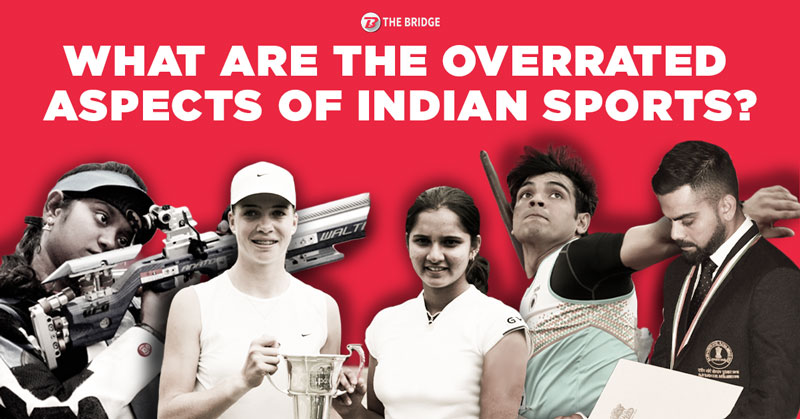
India, as a nation, has always been starved of big sporting achievements. Of course, we have had our moments of glory over the years, but given our size, population, economic strength and now, the way young Indians see their place in the world at large, those sporting glories have been few and far between.
It is never pleasant when at the end of every Olympics, your country is ranked towards the bottom in lists showing medals per capita or medals in terms of economic size. There also seem to be far more tales in Indian sport of near-misses and cracking under the pressure than there are of winning titles.
Thus, it is not surprising that one of the by-products of our under-achievement is that we often latch on to smaller achievements much more strongly than we should, and end up blowing them way out of proportion, especially in today's social media world. This article looks at some such aspects of Indian sport.
World Rankings
 Elavenil Valarivan is ranked No.1 in Women's 10m Air Rifle (Image: RajBhalajioff)
Elavenil Valarivan is ranked No.1 in Women's 10m Air Rifle (Image: RajBhalajioff)
World Rankings is an aspect far too over-valued by various stakeholders in Indian sport. While they can act as a decent indicator and be a feather in a sportsman's cap, in India it seems that outside of Olympic medals, and World Cups in team sports like cricket and hockey, no other achievement or title win is celebrated or valued as much as someone becoming the World No. 1 in their sport.
The thing about World Rankings though is that their accuracy and relevance varies greatly from sport to sport. For a World Ranking to truly reflect the relative abilities of players, players need to compete against other top players reasonably often, without any restrictions based on which country they represent, and over a sustained period of time. However, besides the racquet sports, very few sports have that level of competition.
The result is that one often doesn't become World No. 1 because he/she is the best player on the planet, but due to external factors. In particular, rankings for boxing and wrestling can be particularly misleading as not only are they based on a very small number of events, but on top of that those events generally allow just 1 competitor per country! So, if a country has two great boxers in the same category, it might send one to one event and the other to the other event. But that does not help either of the boxers' World Ranking when the rankings are based on a total of just those 2-3 events.
For example, the Olympic Boxing Task Force recently released their new World Rankings. While Amit Panghal topped the 52 kg category and grabbed the headlines, what got missed out was that 2019 World Championship Bronze Medallist Manish Kaushik was placed a lowly 12th in the 63 kg category, tied with 5 other boxers! Among the boxers tied with Manish were competitors from Samoa, Papua New Guinea and Morocco!
Manish's low rank is because the rankings are based on a total of only 3 tournaments over 3 years – the 2017 and 2019 World Championships, and the last continental games/championships. And Manish competed in only one of those 3 events, with Shiva Thapa being the preferred Indian boxer at the 2017 World Championships (which he ended up withdrawing from at the last moment on account of food poisoning) and the 2019 Asian Championships.
Even in Amit's case, he is ranked World No. 1 ahead of his conqueror, 2019 World champion and 2016 Olympic Champion Shakhobidin Zoirov of Uzbekistan as Zoirov did not compete in the other 2 events, where incidentally Amit exchanged victories with another Uzbek Olympic Gold Medallist in Hasanboy Dusmatov, who is ranked a lowly 19th.
Further, in the interest of fairness, the points allocated to the Asian Championships were the same as the points allocated to the Pacific Games, an event composed of only small island nations with even Australia and New Zealand not allowed to compete. Unsurprisingly, it was this Pacific Games where the aforementioned boxers from Samoa and Papua New Guinea earned their World Ranking points to tie Manish on the World Ranking list.
Such an issue of miscategorised events is also present in the recently developed Athletics World Rankings, where the number of placing points obtained for winning Gold at the Asian Championships is the same as that at the far more competitive European or African Championships. In fact, in athletics, even National Championships can contribute to World Ranking Points, with the Indian National championship categorized at the same level as the USA National Championship.
Sports like shooting and archery also form their world rankings from very few events (with these events also having restrictions on the number of competitors per country), with a shooter rising from WR 100+ straight to the top 10 on account of a single performance being commonplace. And when the events constituting the rankings are few, lopsided draws take on an even more important role as they seem to have currently done in the wrestling rankings due to particularly lopsided draws in many categories at the last World Championship.
Age Group Performances
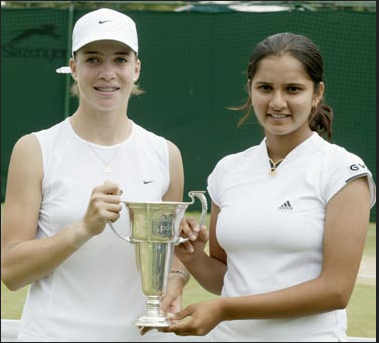 Sania Mirza won Junior Wimbledon in women's doubles at the age of 16 (Image: India _AllSports)
Sania Mirza won Junior Wimbledon in women's doubles at the age of 16 (Image: India _AllSports)
This is another aspect which is quick to create far too much hype in India. Ideally, age group tournaments should be seen as a means to an end, rather than an end in itself. But we have now reached a stage where Youth Olympic medals are being rewarded with crores of rupees, while everyone from administrators to coaches to celebrity fans are quick to anoint a player as the next big thing after doing well in an U-17 or U-19 tournament. But there are many reasons why junior success often does not translate to success at the senior level.
First of all, by design, age group tournaments are often restricted to individuals born in about a 2-year window. So, for example, an U-17 tournament will largely consist of only 16 and 17 year olds, because human bodies grow a lot during the adolescent years and thus, a 15-yr old is generally at a quite a big disadvantage when facing a 17-yr old. However, to succeed at the senior level, a player needs to face and defeat opponents born over a much wider range of about 10-15 years, or even more, depending on the sport. Thus, just in terms of numbers, the amount of competition at the senior level is at least 6-7 times the amount of competition at the junior level.
This is one of the reasons why Indian football putting all their hopes on the U-17 World Cup team is likely to turn out to be an exercise in futility. The U-17 team is like a single batch graduating from college, a batch that happened to gain a particular experience no other batch could. But, the senior team is still unlikely to become great by pinning all its hopes on a single batch. Rather, it needs to pick and develop the best players across batches.
Further, sport is now increasingly becoming a young person's game. As a result, the best age group players often just graduate to the senior level much earlier and hence don't even compete in age group tournaments. As an example, Sania Mirza won Junior Wimbledon in women's doubles at the age of 16 and then largely stopped competing in junior tournaments, even though she could have done so for another couple of years. Similarly, PV Sindhu was winning medals at the senior world championships while she was still eligible to compete in the junior world championships. By the age Hima Das won her Gold at the World U-20 championships, Salwa Eid Naser had already won Silver at the senior world championships.
Another reason why junior success may not translate to seniors is simply an act of nature, where a youngster's body just does not grow as much as expected. As an example, in 1998, Roger Federer won the Wimbledon junior doubles crown partnering Oliver Rochus, both players aged 17. But while Federer went on to become Federer, Rochus' physical height ended up topping out at only 5 feet 5 inches, meaning he struggled on the senior tour.
And lastly, in an Indian context, probably the most important reason junior results need to be taken with a pinch of salt, is age fudging. With the process of getting a fake birth certificate as easy as it is in India (I remember taking my SAT exam some years ago, where there was a special rule only for Indian and Pakistani students which stated that only the passport, and no other document, will be accepted as a valid proof of birth!), age fudging is rampant and it is impossible to know how many of India's junior sporting achievements are genuine and how many are achieved by over-age players.
Thus, it makes one wonder whether the tremendous increase in monetary rewards in India associated with junior tournaments is a good thing. On one hand, it gives players an earlier start to making a living from their sport, but on the other hand, it further encourages age-fudging and also provides incentives for world class players to continue competing at the junior level rather than graduate to the senior level.
May be, the Indian fascination with age group achievements comes from the most hyped youngster of all time – Sachin Tendulkar. Sachin never even played an U-15 or an U-19 World Cup but still had tremendous hype around him even before he had debuted for his city, let alone the nation. And as it turned out, he still went on to deliver far more than even that humungous hype. But for every Sachin Tendulkar, unfortunately, there are multiple Unmukt Chands out there.
And by the way, an aspect which is doubly misleading is the Junior World Rankings. With the best players graduating early to the senior level, and juniors around the world facing issues w.r.t sponsorship and funding, these rankings often get determined by the amount of participation as opposed to level of performance, with financially well-backed (but possibly mediocre) players often rising to the top.
Also Read: Under-17 Women's World Cup: Match schedule and host cities announced
Off-field Awards
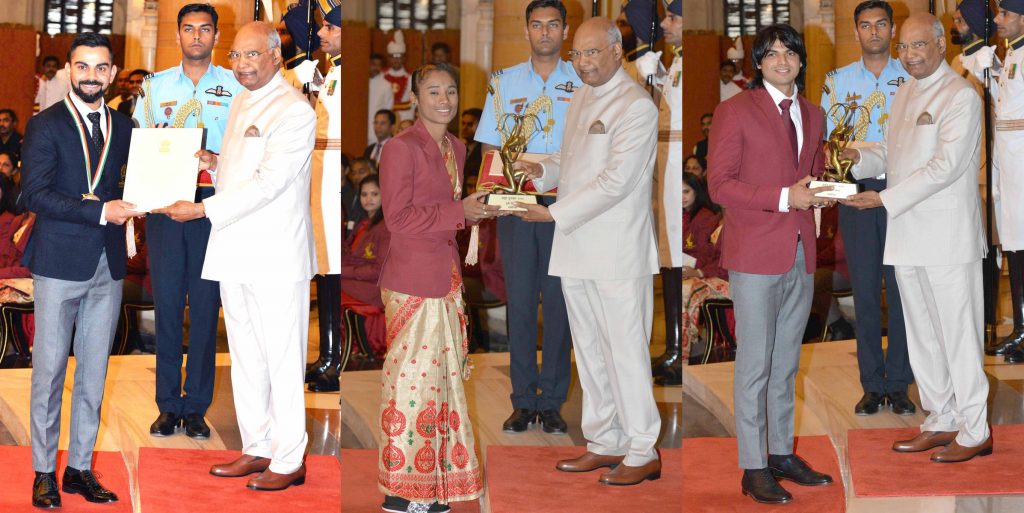 In India, controversy is sure to break out every year after the announcement of the Khel Ratna and Arjuna Awards. (Image: http://newsmobile.in/)
In India, controversy is sure to break out every year after the announcement of the Khel Ratna and Arjuna Awards. (Image: http://newsmobile.in/)
By its nature, professional sport is an activity where the ultimate aim is to win titles, medals and awards. Thus, realistically, is there even a need for off-field sporting awards? Aren't awards won on the field enough recognition? I guess in team sports, there is a reason to award outstanding individuals who may be haven't been able to win the team medals as much as they could have due to a weak team surrounding them, but even there, aren't simple pseudo on-field awards like man-of-the-match enough?
In India, controversy is sure to break out every year after the announcement of the Khel Ratna and Arjuna Awards. We have now reached a point where no matter what the government does with these awards, there is sure to be controversy as some athletes will be left off the list, and the media in a bid to fill space will provide those athletes with a platform to grieve.
Of course, over the years the government has done itself no favours, often allowing politics to play a huge role besides maintaining no consistency in terms of numbers, with 4 Khel-Ratna awardees being announced a few days after a disastrous 2-medal Olympics being a particularly jarring example. Would the Ballon d'Or, for example, be considered as prestigious as it is if it was just jointly awarded to Ronaldo and Messi every year? But the Khel Ratna, named after a politician as it is, can sometimes also get awarded, jointly, to a sportsperson on the verge of joining the ruling political party.
And the new hook these days seem to be awards decided through public voting, with many different stakeholders including international sports federations joining the race to award their own versions. This often leads to players campaigning for votes before, eventually, the Indian wins the award on the back of India's enormous population.
The unfortunate fact is that awards create eye-balls, both for the giver and the receiver, and thus they will continue to be given out. I just hope they would be seen as just a fun little aside, as opposed to something where sportspersons start thinking about approaching politicians and/or the courts to right a perceived wrong. May be, it might be better if awards would just give out trophies and certificates, as opposed to monetary prizes as well, as generally it is this financial incentive which compels sportspersons to feel aggrieved.
Small Events Hosted by Developed Countries
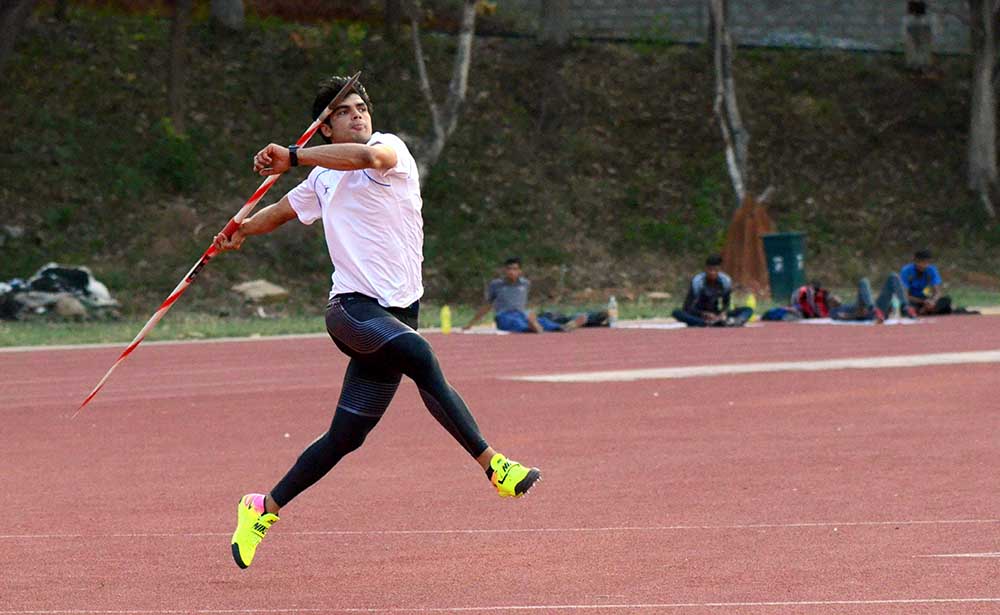 Neeraj Chopra recently qualified for Tokyo by throwing 87m+ at a small largely unknown meet in South Africa. ( Image: City Hub News)
Neeraj Chopra recently qualified for Tokyo by throwing 87m+ at a small largely unknown meet in South Africa. ( Image: City Hub News)
We have a tendency in India to under-value events hosted by ourselves, while over-valuing events hosted in first world countries. Achievements at home are often seen as achieved only due to home advantage, or due to top foreign competitors not showing up, whereas even a small event in Europe, Australia or USA is assumed to have all the top competitors. Sometimes, this bias is justified, as top sportspersons can have a tendency to choose to compete in developed countries on account of perceived better organization and facilities, but on other occasions this can lead to truly misleading comparisons and a misplaced sense of achievement.
The best example of this is of course the marketer fuelled golden month by Hima Das, where she won 5 consecutive golds in "European meets". The fact that the meets were in Europe papered over the other fact that the competition level was similar to or even lower than Indian domestic meets (with most of the finalists being Indian), and was enough for many to shower praises and instantly declare Hima an Olympic medal favourite, irrespective of the fact that she hadn't even qualified for the games yet! And while praise is one thing, it also led to demeaning the achievements of others, such as tweets labelling it as a bigger feat than Rohit Sharma's 5 centuries in a single world cup.
Neeraj Chopra recently qualified for Tokyo by throwing 87m+ in his first competitive meet on return from injury. As it was a small largely unknown meet in South Africa, the first instinct of most journalists, rightly so, was to check whether it was a legitimate meet and thus whether the qualification was valid (and also, there was no mention of the fact that he did win Gold). However, I wonder if the same journalists would have had the same response and instinct to verify if the meet had been held in USA or Europe as opposed to South Africa.
Rural-looking Videos of "World-Beating" Feats
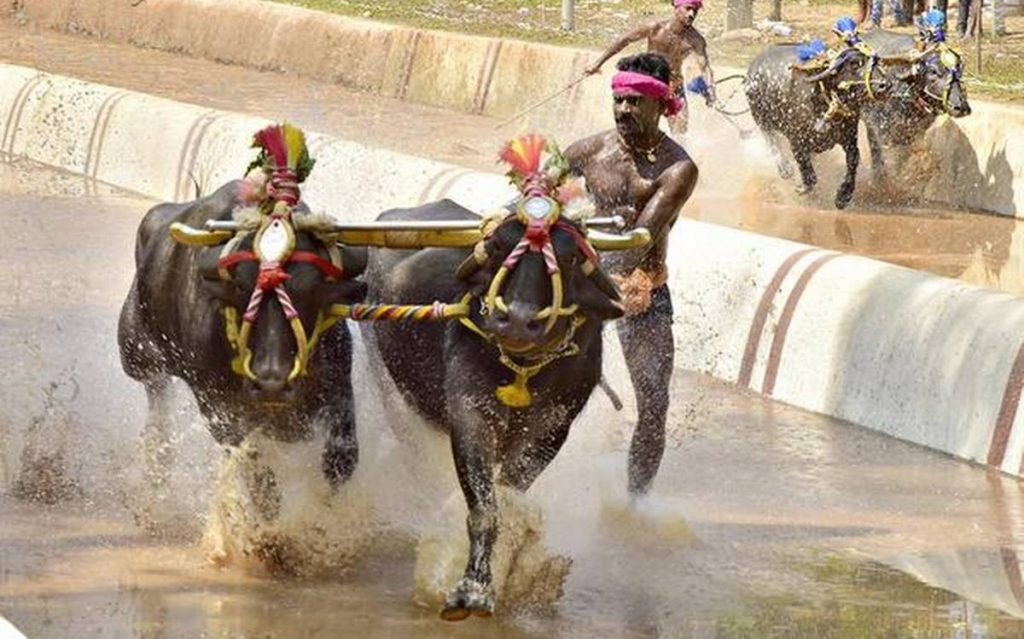 Srinivas Gowda's achievements at a Kambala race was blown out of proportions. (Image: The Hindu)
Srinivas Gowda's achievements at a Kambala race was blown out of proportions. (Image: The Hindu)
Far too much has been already said and written about Kambala racer Srinivas Gowda for the entire story to be recounted here. But it does make one wonder as to why such strange stories gain so much traction.
Besides the reasons of general sporting under-achievement stated at the beginning of this article, an additional reason could be that the urban Indian is largely disconnected from rural India. As a result, there is a self-satisfying belief that enormous world-beating talent is hidden in pockets of rural India which has not come forward simply because people in villages do not have the awareness or the opportunity to do so.
While this belief may have held some weight a couple of decades ago, I doubt how true it is today, especially in relation to a basic sport like running. With India's Olympic aspirations and the associated financial rewards having taken a quantum leap since Beijing 2008, it is doubtful that there are even many villagers hiding in the woodwork, staying hidden just because they don't know any better.
Commonwealth Games Medals (in most sports)
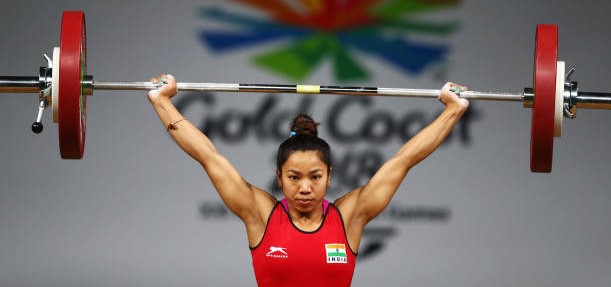 Mirabai Chanu clinched gold in Women's Weightlifting (48kg) at the Gold Coast 2018 Commonwealth Games. (Image: Dean Mouhtaropoulos/Getty Images)
Mirabai Chanu clinched gold in Women's Weightlifting (48kg) at the Gold Coast 2018 Commonwealth Games. (Image: Dean Mouhtaropoulos/Getty Images)
And finally, this is actually one aspect that many true fans and regular sports followers recognize, but is probably too nuanced for casual fans and celebrities. The fact is that not all Commonwealth Games (CWG) medals are created equal, in terms of level of competition and thus potential to win a future Olympic medal.
While winning a CWG Gold in athletics is much tougher than at the Asiad due to presence of African countries at CWG, a weightlifting, wrestling or shooting CWG Gold is often won against easier competition than seen at the Indian National Championships.
But, in the interest of equality, such differences are unlikely to be recognized at the time of doling out financial rewards (and in any case, our sportspersons and their respective federations deserve accolades for making India the dominant Commonwealth nation in these sports). Thankfully though, they seem to be getting recognized at least to some extent in terms of projecting future Olympic medallists.

